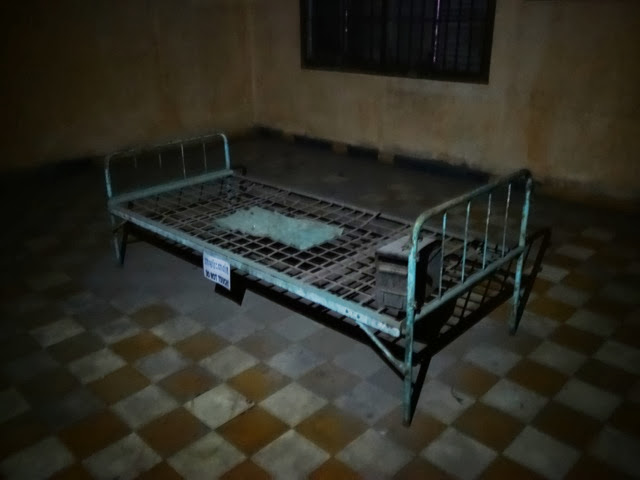I enjoyed this day so much! Semadang Kayak's is a small family-run operation, it's minimum tour size is normally 2 pax, but for reasons unknown they made an exception for me. So it was just myself and two guides, brothers McKenzie (driving) and MacQueen (kayaking with me) who left Kuching and drove for forty minutes in their minibus to the Semadang river.
Early on in the journey, I saw a discarded plastic water bottle and picked it up, mentioning how I didn't like rubbish. MacKenzie took notice, concurred and retrieved a plastic bag. With no other customers to worry about, and with no further discussion we tacitly turned our expedition into a river clean-up mission. By lunch-time our kayaks were laden with trash that had been washed downstream by flood waters and got tangled in branches along the riverbank.
Forgot a change of clothes so had to wring out sodden t-shirt before lunch. Don't normally look as lean as this, thanks MacKenzie.
MacKenzie and MacQueen and a delicious lunch. The chicken was cooked in the traditional manner, stuffed into bamboo tubes and sealed tightly with fern leaves, then slowly pressure cooked over a fire.


After lunch the brothers took me on a quick tour of the village where we'd stopped, including a fascinating private herb garden and a corresponding brief on the ethnopharmacology of the region.
The limestone karst is easily eroded by the water and created overhangs like this down the river.
The river was already pretty clean, but between the two of us, we collected every bit of garbage that we could safely reach, from sweet wrappers, and crisp packets to flip flops and even a crash helmet. I'm not under the illusion that it'll stay clear for long, and it'll never be totally pristine, but the locals that were fishing and collecting Durian fruit were smiling in appreciation (or incredulity, or perhaps even embarrassment), so with any luck the message may get through and less rubbish will end up in the system. I always remember my uncle Mike telling me that litter breeds litter; that is, people are much more likely to discard waste if they see some already there. I hope today we put a stop to that, if only for a short while.
MacQueen with trashed crash helmet.
The river runs through a beautiful gorge carved out of jungle covered limestone. All day we were surrounded by beautiful butterflies, swiftlets and dragonflies of many shades. Later on, at a slow flowing section of river we waded in and fed the fish. They clearly anticipated this visit every day, and arrived to feed in a frenzy of flipping and leaping.

















































